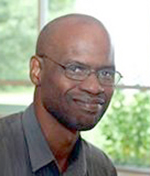A third of Asian Americans say religion is very important
WASHINGTON (RNS)—More Asian Americans identify as atheist, agnostic or nonreligious than before, according to a survey by Pew Research Center.
But 40 percent of those Pew surveyed, who included Americans of Chinese, Filipino, Indian, Japanese, Korean and Vietnamese backgrounds, said they feel close to a religion for reasons aside from religion, such as family or cultural ties.
Pew’s survey, which studied over 7,000 participants over the course of a year, found that Asian Americans are part of the ongoing trend of Americans who don’t follow any religion, often referred to as “nones.” Today, 32 percent of Asian Americans are religiously unaffiliated, compared with 26 percent in 2012.
Asian Americans as a whole are mostly Christian (34 percent), especially Korean (59 percent) or Filipino Americans (74 percent), who are evenly split between Protestantism and Catholicism (16 percent and 17 percent). Born-again or evangelical Protestants make up 10 percent of Asian Americans.
However, Asian Americans who identify as Christians have shown the sharpest declines in affiliation with religious institutions since 2012, dropping by 8 percentage points.
More than half (56 percent) of Chinese Americans and close to half (47 percent) of Japanese Americans said they are not affiliated with any religion, comprising the largest groups of religious nones. They are also the groups least likely to consider religion very important.
Buddhists and Hindus, both at 11 percent, were the next largest faith groups. Vietnamese Americans are the most likely of the Asian origin groups to identify as Buddhist (37 percent), and Indian Americans are far more likely than the other groups to be Hindu (48 percent).
The survey’s findings reflected a complex understanding of religiosity in many Asian American cultures, in which religious identity can mean more than just adhering to a set of beliefs. In particular, daily life in Asian countries can be infused with practices associated with Buddhism, Hinduism, Daoism, Shintoism and Confucianism, even among those who do not identify as religious.
One Vietnamese Buddhist told the researchers, “Confucianism and Daoism is part of my culture. However, for me, it’s a school of philosophy. I do not identify myself as being a Daoist or Confucian.”
While only 11 percent of Asian American adults say their religion is Buddhism, for example, 21 percent feel close to Buddhism for other reasons.
Religiously unaffiliated Indian Americans report this phenomenon at much higher rates than nones of other Asian origin groups, saying they feel close to Hinduism for reasons aside from religion.
Reported affinity toward more than one religion
Many Asian Americans also reported feeling an affinity toward more than just one religion, the survey found. Four in 10 Asian American adults expressed a cultural connection to one or more groups that they do not claim as a religious identity, but still feel close to.
One Hindu participant expressed a connection to Buddhism “because some of the practices of Buddhists, they are very much similar” to Hindu practices.
The survey found 18 percent of Asian Americans do not identify religiously as Christian, yet say they feel close to Christianity aside from religion, including, for example, the American celebration of Christmas.
“My whole life I was exposed to Christmas and all this stuff. Even though I don’t believe in it, we had to give gifts … so it was always part of our culture, even though we don’t believe in it,” said one non-Christian Indian participant who grew up in the United States.
On the whole, Asian Americans are slightly less likely than Americans as a whole to say religion is very important in their lives, the survey says.
Asian American Muslims (60 percent) and Christians (54 percent) are much more likely to feel that religion is very important in their lives than are Asian American Hindus (33 percent) and Buddhists (31 percent), and also are the likeliest to say they attend religious services or visit a temple, shrine or other religious space at least monthly.
Regular religious attendance is more common among Korean and Filipino Americans than among Vietnamese, Japanese or Chinese Americans. And as a whole, Asian Americans born in a country other than the United States are far more likely than those born here to say they attend religious services at least monthly (32 percent versus 21 percent).
Twenty-one percent of all Asian Americans surveyed said they attend services at least weekly.
Worship trends vary among traditions, but 36 percent of Asian Americans say they have an altar, shrine or religious symbol that they use for home worship. Of those who do, many identify as Buddhist or Hindu.
But worshipping at home is also fairly common among Catholic Filipino Americans, with 66 percent of them saying they have an altar at home.
As many Asian Americans expressed a dual-belonging with more than one religion, 30 percent of Asian Americans said all or most of their friends have the same religion they do. Seventy-seven percent of Asian Americans say they would be comfortable if a family member married outside of their faith.













